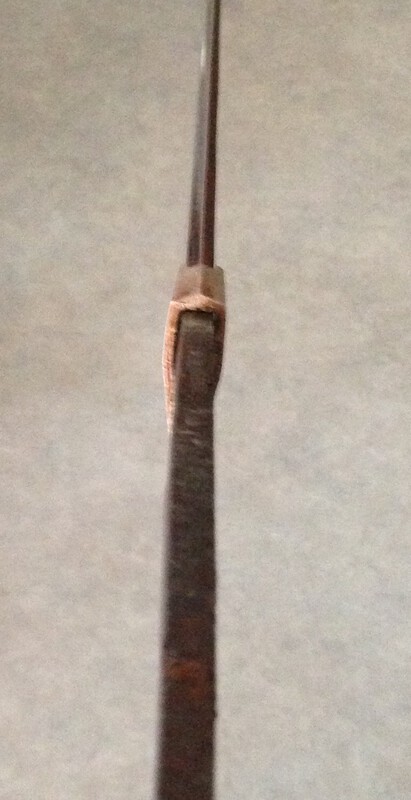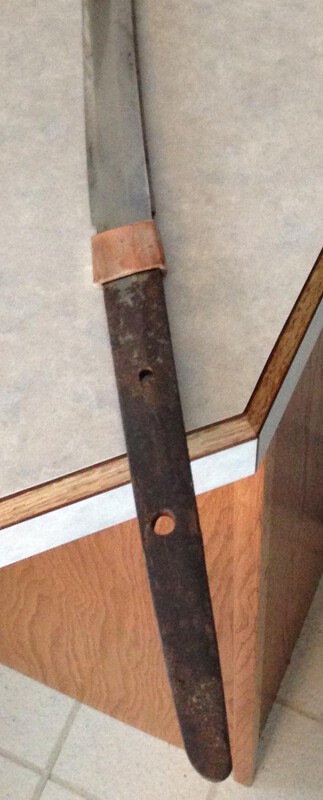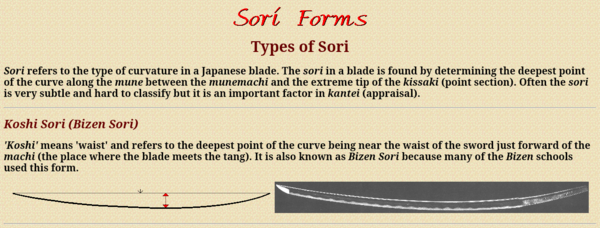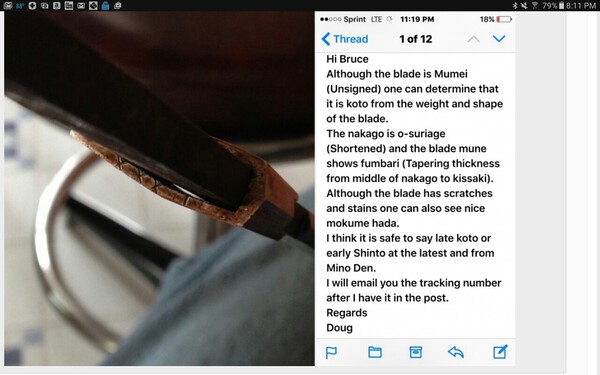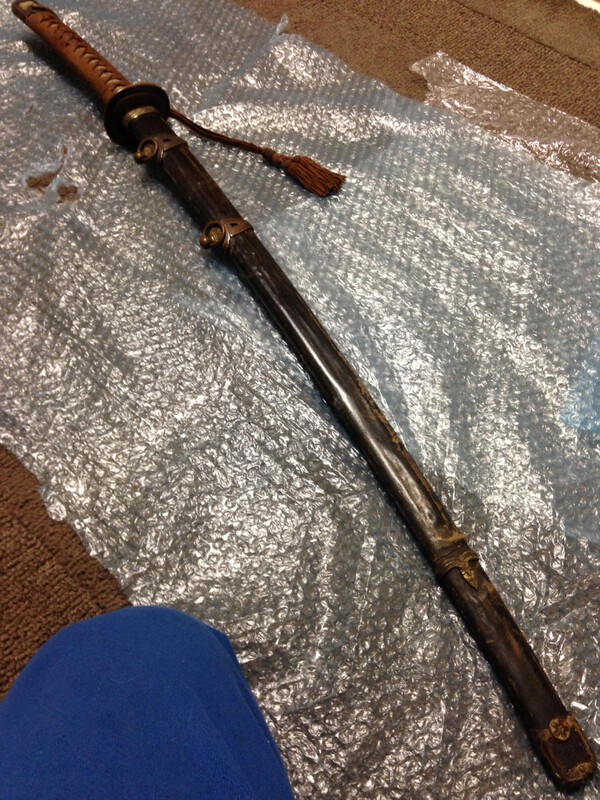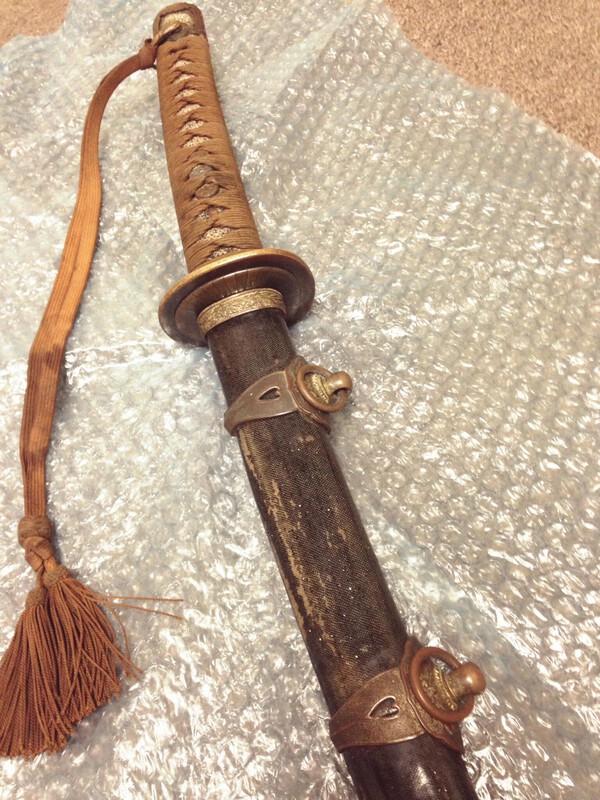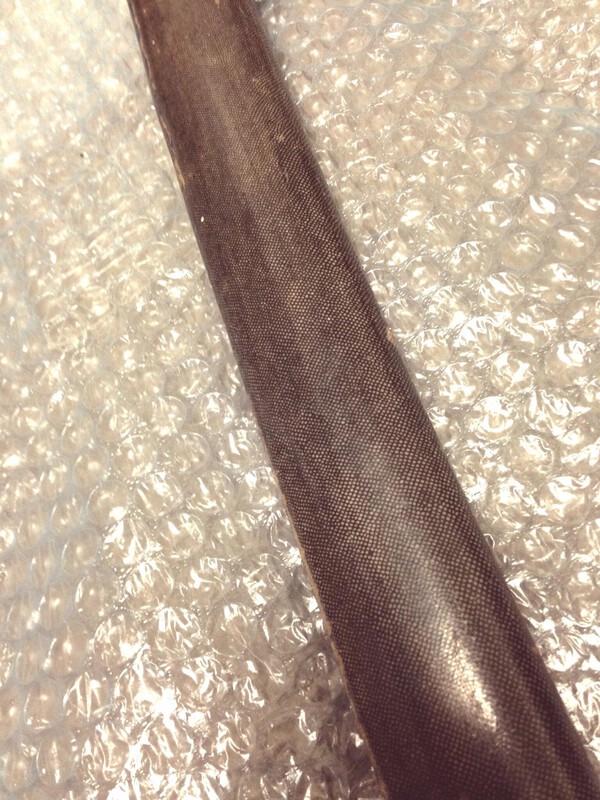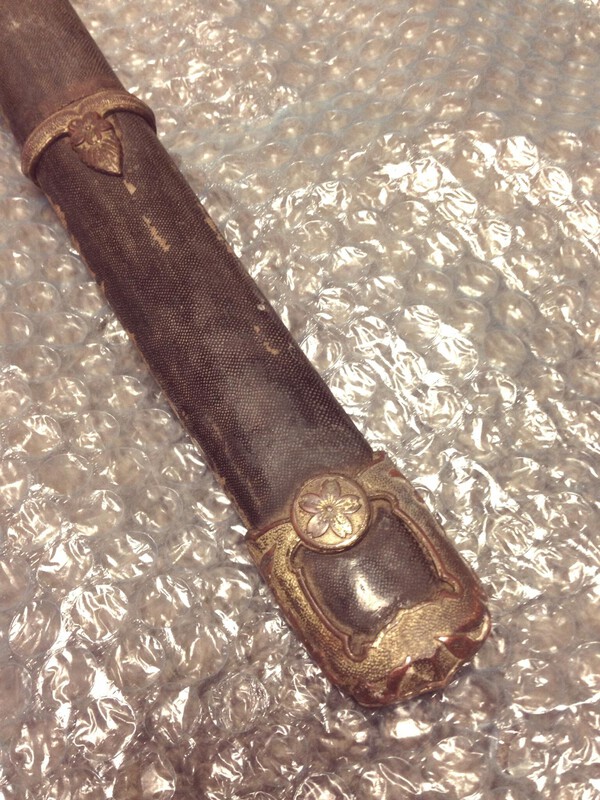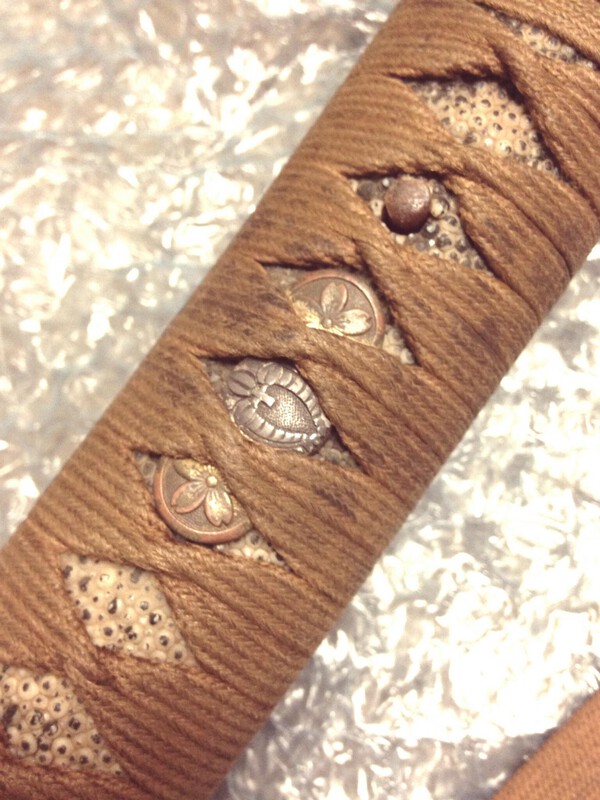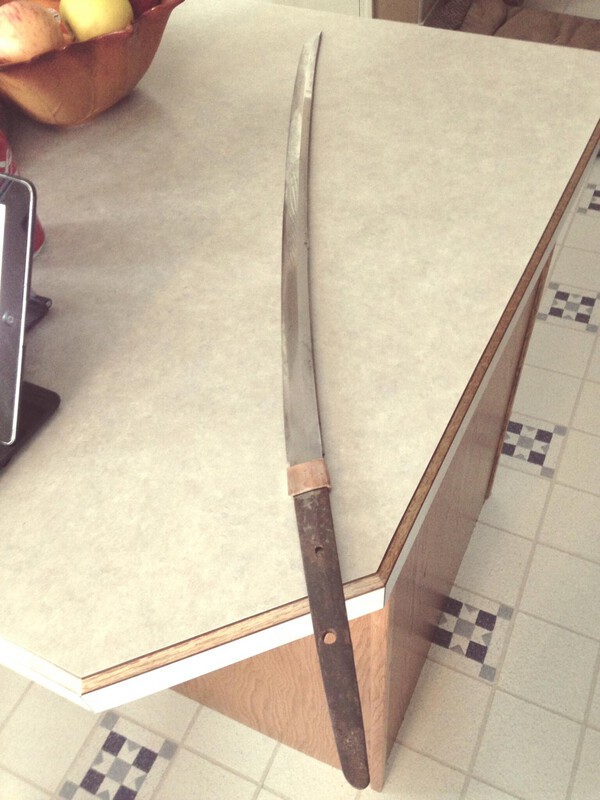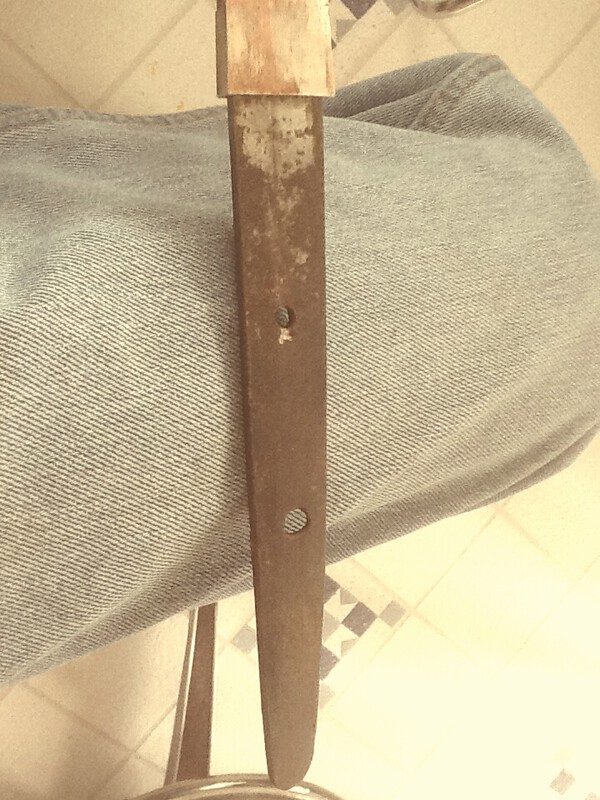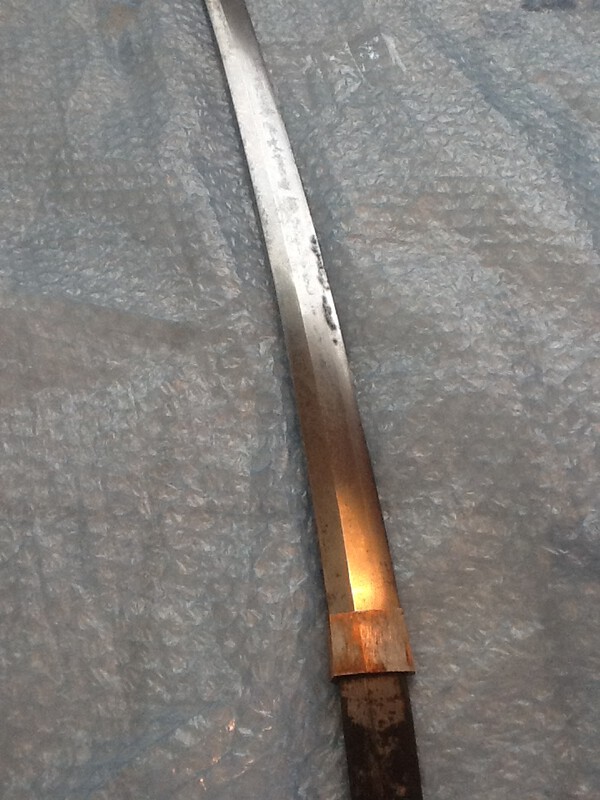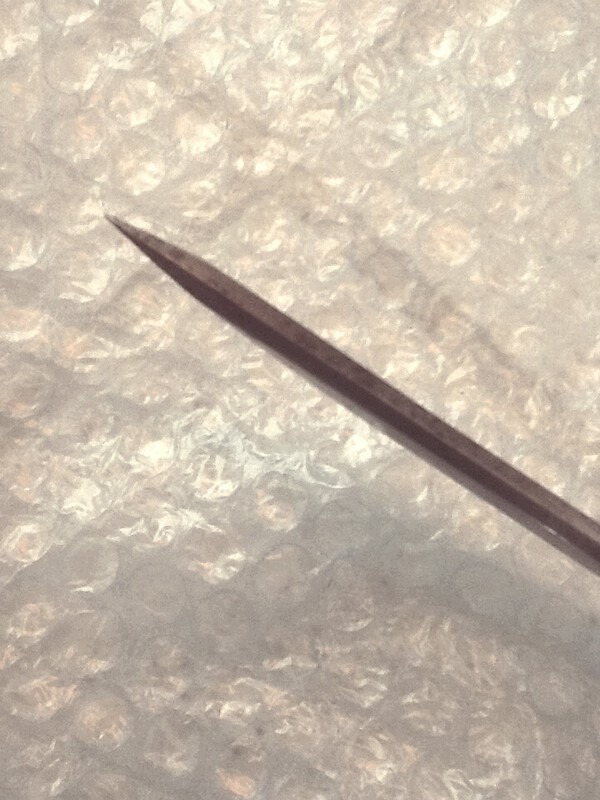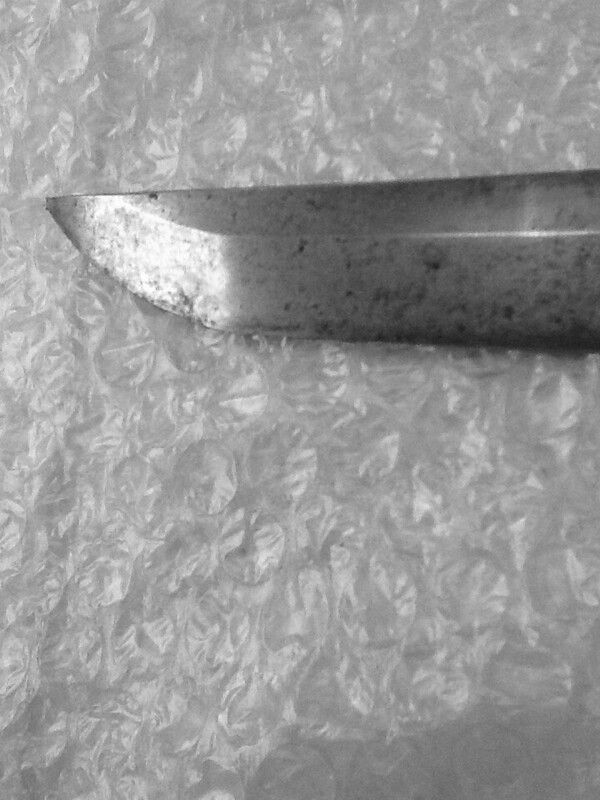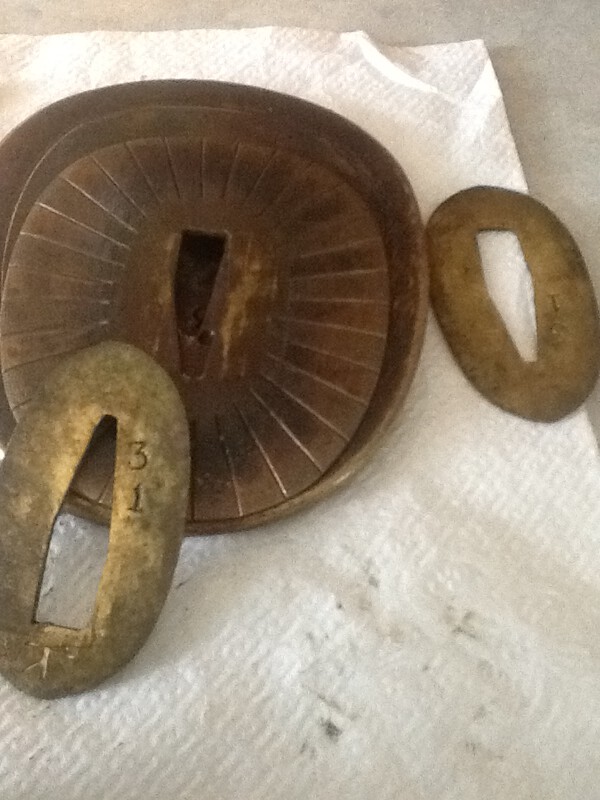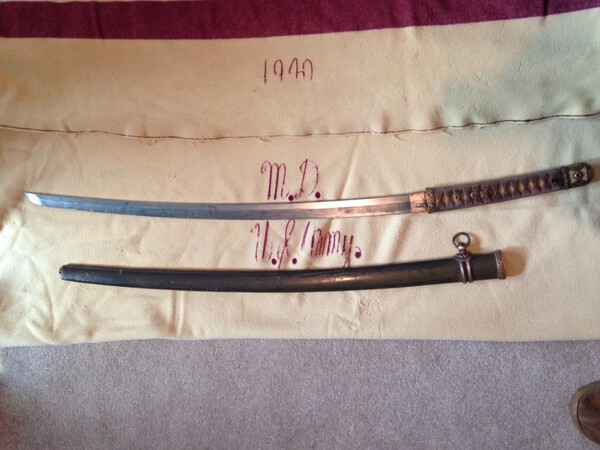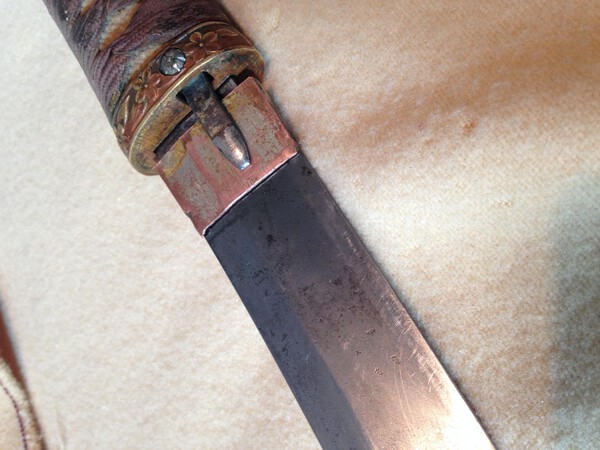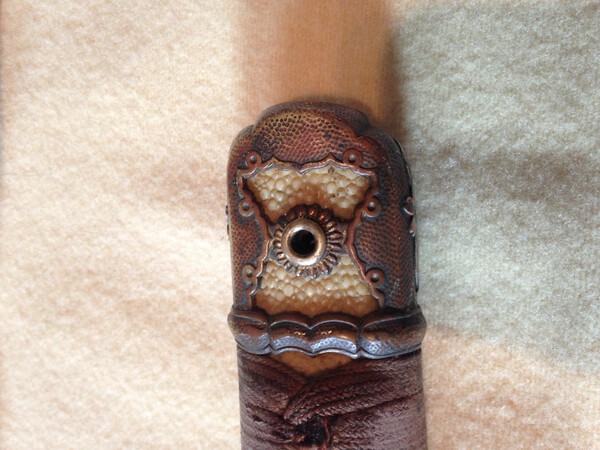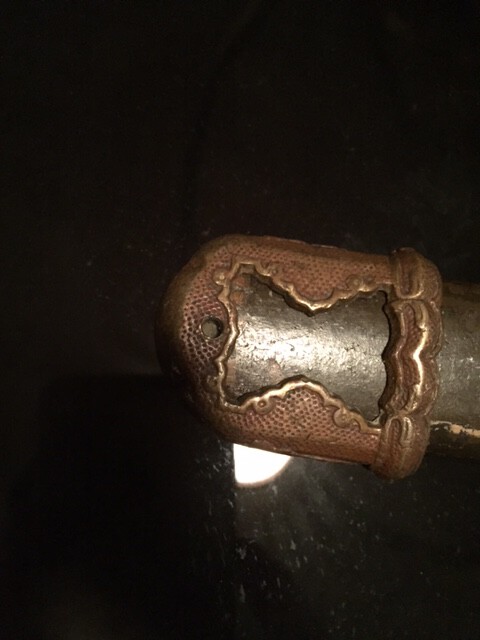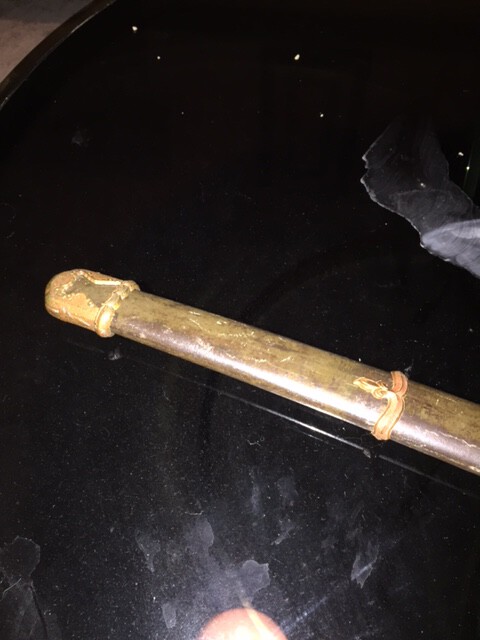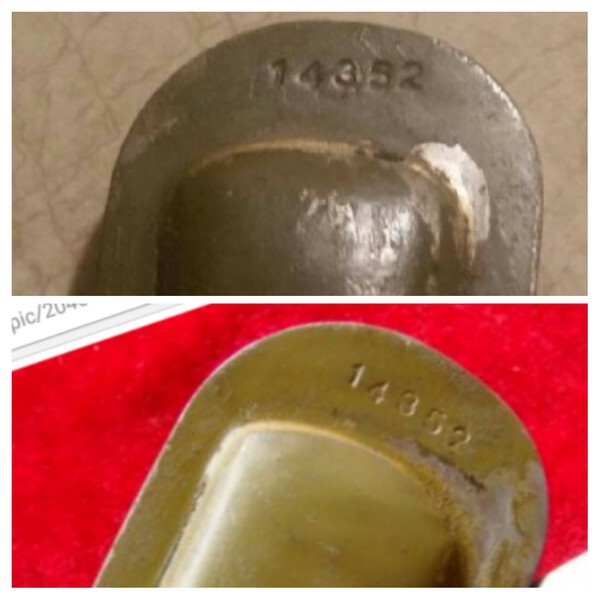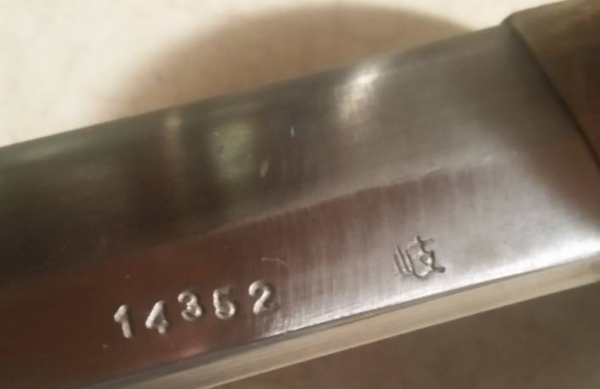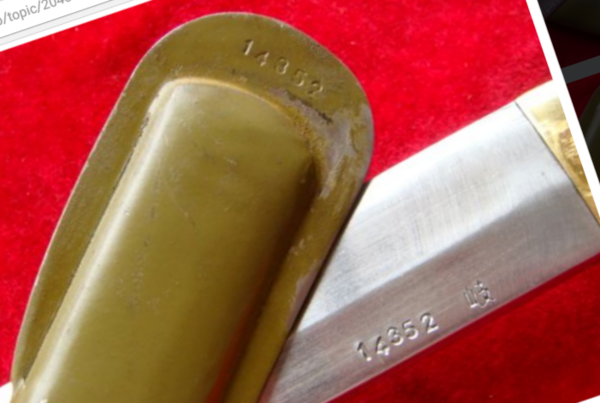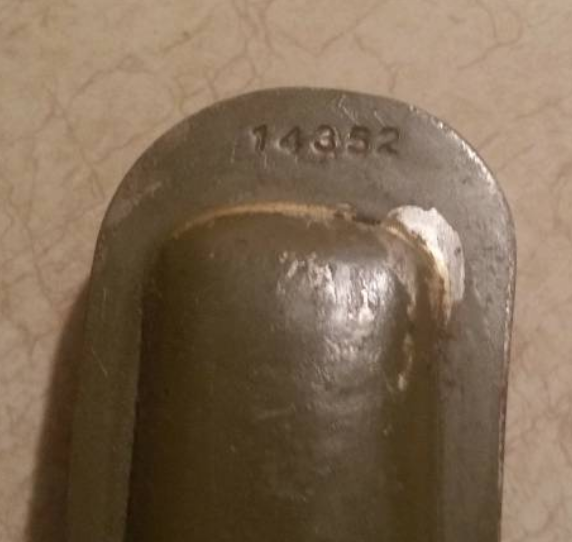-
Posts
12,956 -
Joined
-
Last visited
-
Days Won
154
Everything posted by Bruce Pennington
-

Kai-Gunto With Koto Blade
Bruce Pennington replied to Bruce Pennington's topic in Military Swords of Japan
Alex, I'm afraid I'm on the road and won't be home for a few days. I'll find out when I return and post answers! -

Kai-Gunto With Koto Blade
Bruce Pennington replied to Bruce Pennington's topic in Military Swords of Japan
Thanks Malcolm, interesting read! I have seen a few gunto over the past year with the wisteria mon, which I thought was odd, and someone mentioned on a thread somewhere, that by WWII, an officer buying a gunto at the club was shown a book of available mon and could literally pick whichever one he wanted. Now, as I wrote that, it did occur to me that if a guy NOT named Fuji/Fujiwara picked a "Fuji" mon, other officers in his unit would question him and give him crap about it. Knowing how "face" and/or shame played a powerful role in the culture, I would be very surprised if a guy would risk such getting caught with a fake mon. I wish I knew more about the customs of the day. Is it possible a guy, with now Samuri lineage, would pick a mon and say "I've picked Fuji in honor of the great So-and-So Fujiwara. May his spirit guide my hand in battle."???? -

Kai-Gunto With Koto Blade
Bruce Pennington replied to Bruce Pennington's topic in Military Swords of Japan
Paul, Multiple polishing let over a 400 year period just might do that! I found a decent pic of it. Also, a better pic of the Nakago. It's got a mix of orange and black: -

Kai-Gunto With Koto Blade
Bruce Pennington replied to Bruce Pennington's topic in Military Swords of Japan
Ok, so is it correct to say the mon is for the "Fuji" family name? -

Kai-Gunto With Koto Blade
Bruce Pennington replied to Bruce Pennington's topic in Military Swords of Japan
PaulI appreciate your comments, as I'm learning as I go with this! Maybe your eye on the curve is better than mine, but to me it looks like the deepest part of the curve is closer to the nakago end. I only have one source, the website listed above, but doesn't that make it a Kashi-sori? On fumbari, I was puzzled by that too, as this website uses the term in reference to the width of the blade as it's laying flat. I'll post the description from the seller where he uses it in reference to the thickness looking down at the back edge. It really is peculiar! The nakago thickens from the machi back to the jiri, so much that the habaki won't slide off without litterally bending it! After re-reading his notes, I see that he actually does state it could be late Koto or early Shinto. -

Kai-Gunto With Koto Blade
Bruce Pennington replied to Bruce Pennington's topic in Military Swords of Japan
Malcolm, As far as I can see there is no ring around the wisteria, and it sits on the outside as the gunto is worn. So what does "Sagari Huji" mean? Is that a name? -
Have been doing some research in an effort to narrow down a possible date range for this Koto era blade I picked up when I bought this Kai-gunto. I didn't originally want it, because it looked like it must have lain in a swamp for a couple of years (saya worn, fittings missing most of the gold guilding); but 3 things sold me on it: 1) It has the sharkskin saya upgrade, 2) Family mon on the menugi, and 3) old Koto blade. What I've learned so far (some from the seller, some from this site:http://meiboku.info/guide/form/zukuri/index.htm Nakago Jiri (end shape): Kuri (only style used up to 1400) Sugata (blade form): Shinogi Zukuri (Periods after Heian) Sori (point of blade where pronounced curve begins): Kashi Zori, also called Bizen Sori (Bizen School started 1185) Hamon: Suguba Kissaki: Chu Kissaki: most common; used from mid-Kamakura period (1185-1333, so 1260ish) Mune has fumbari - back edge of blade is fattest mid-nakago and gradually tapers all the way to tip So the youngest date: 1596 Earliest date: Mid-Kamakura (1260ish) or if Mino School then 1300. Range: 1300 - 1596 Open to any and all inputs!!!
-

Shin Gunto. The Signature On The Nakago.
Bruce Pennington replied to Fumei's topic in Military Swords of Japan
Vladimir, The writing on the tsuba and seppa (handguard and spacers) are 2240, just assembly numbers from the factory to keep fitted parts together. Someone should be able to give you some info on the kamon (family crest). Very beautiful! Do you know any of it's story? How did you come across it? -

Restored Ww2 Blade,any Opinions Please?
Bruce Pennington replied to The_ozzy_samurai's topic in Military Swords of Japan
Julian, that's actually quite gorgeous! Maybe you've discovered a new hobby! Even the pros say it takes them 3 weeks or so to polish a blade. Nice job. Hey check your pm's! -
OH MY GOSH!!!! If it was a snake, it would have bit me; as they say!!! I actually laughed out loud when I went back to see that. Thanks Malcolm. Ok, I take back everything I've postulated about an NCO putting that together (howsomever, I HAVE known some NCOs over the years that could have done something as bone-headed as that!!!)
-
Here's another one from Chris Franklin, Sword Forum International: http://www.swordforum.com/forums/showthread.php?118190-Curious-hybrid-sword
-
Any swordsmith experts know where Tenshin worked?
-

The Mysterious "w" Stamp!
Bruce Pennington replied to Bruce Pennington's topic in Military Swords of Japan
Thanks Cory! Does anyone know what province Tenshin worked in? -
I am open to ideas, certainly the serial number looks identical, but it's possible they are using a fixed number and stamping multiple items with it. The ends of these saya look different to me if you ignore the numbers. The corners of the actual saya tip, not the drag, on the top are rounded, where the corners of the bottom one are squared off. In fact, though, the number pattern on each is different. One is "up, down, up, up, up" where the other is "up, down, up, down, down." Nope, not the same saya.
-
Wow, good catch! The saya are different, so the blades probably are too! But the number stamp is identical, even to the pattern of the numbers.
-

Authentic Wwii Japanese Nco Sword?
Bruce Pennington replied to Corry's topic in Military Swords of Japan
Fuller & Gregory has one on page 84, that shows which arsenal supervised each serial number group. I've never seen a list that shows the manufacturing progress for each plant by serial number. I'll attach some charts provided for years 1944, 45, from Nick Komiya at Warrelics, but they're in Japanese. Word on the street is that they were making 3,000 Type 95s per month! The copper handled guntos were made in a one year span from 1937 to 1938, then the aluminum handles started. Wooden handles begining in the 200,000 and 300,000 range began roughly in 1944 to 1945. So, between 1938 and 1944 (6 years) all the aluminum handled serial numbers were cranked out, and not necessarily sequentially, since number blocks were portioned out to the various arsenals. So you can do some very rough mental math, and say what you like about a serial number in the 45,000 range, but I'd say 1940ish??? Someone with more expertise PLEASE stop me!!! -
I see - don't give good intel to the bad guys! Never thought of that. I just thought Stegel was using it like a fun challenge game!
-
I've seen 2 or 3 of this style lately!!! 1. Ugly cross-hatching, 2. wrong tuska retention screw nut, 3. Serial number way too early, 4. Serial number stamped on drag, 5. UGLY kissaki, 6. No retaining screw for the throat piece.
-

Authentic Wwii Japanese Nco Sword?
Bruce Pennington replied to Corry's topic in Military Swords of Japan
Corry, nice going for a first shot off eBay! I've gotten about a third of mine from there, but there are some real clunkers out there! Sword was made by Ījima Tōken Seisakusho (left stamp); Inspected by Tokyo First Army Arsenal (center stamp) for the Tokyo Kokura Army Arsenal (right stamp). Likely year - 1939-41ish. Great place to learn about these: http://ohmura-study.net/957.html#6 -
From Kapp & Yoshihara, "Modern Japanese Swords and Swordsmiths", "The Japanese military authorities became concerned about the difficulty of distinguishing between traditional swords and Showa-to, and decided in 1937 that all non-tamahagane blades were to be stamped on their tangs to indicate that they were not traditional blades. This was fully implemented in 1940." and From Fuller & Gregory, "Japanese Military and Civil Swords and Dirks," "Neither the 'Sho' or 'Seki' stamps indicate the method of blade manufacture, only that they are not tamahagane gendaito." So this blade may have been handmade, just not using tamahagane.
-
Gorgeous Koa Isshin, Ed! If I didn't already have one, and didn't have a gunto I'm trying to pay off, not to mention my brother's motorcycle that I'm buying - I jump on that! Good price! On another note, my dad's Mantetsu saya is missing the sayajiri. Any chance you have one that I could buy from you? There are many out there with various sellers, but I've learned by experience that you can't just get any fitting and expect it to fit.


